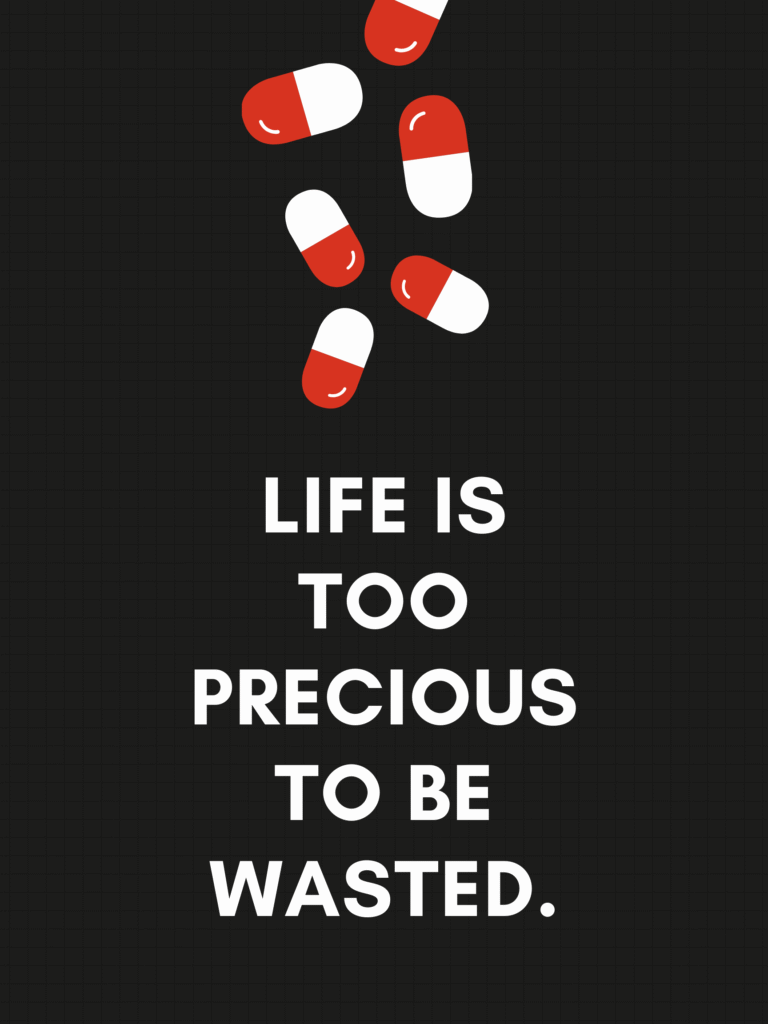
Methadone is a lifeline for many people struggling with opioid use disorder (OUD), offering hope for stability and recovery. Yet, for those considering reducing or stopping methadone, the prospect of withdrawal can feel overwhelming and even frightening.
If you or a loved one is facing methadone withdrawal, you are not alone, and understanding what to expect can make all the difference.
Methadone withdrawal is a unique and complex process, distinct from withdrawal from other opioids like oxycodone or heroin. Its symptoms can be both physical and psychological, and the timeline is often longer and less predictable than with other substances.
According to the Substance Abuse and Mental Health Services Administration (SAMHSA), methadone is a long-acting opioid agonist, which means it stays in the body longer and can lead to a more drawn-out withdrawal experience.
At Thoroughbred Wellness and Recover, we understand the courage it takes to seek help for substance use disorder. Our goal is to provide you with clear, compassionate, and evidence-based information about methadone withdrawal, including its signs, symptoms, timeline, and management strategies.

Understanding Methadone and Its Role in Opioid Addiction Treatment
Methadone has been used for decades as a cornerstone of medication-assisted treatment (MAT) for opioid addiction. As a long-acting opioid medication, methadone binds to the same opioid receptors in the brain as drugs like heroin, oxycodone, and fentanyl.
It does so in a controlled and sustained way. This helps reduce cravings, prevent withdrawal symptoms, and stabilize individuals so they can focus on recovery.
Methadone maintenance treatment is highly effective for many people, reducing the risk of opioid overdose and supporting long-term recovery. However, methadone itself is an opioid, and long-term use can lead to physical dependence.
This means that if you stop taking methadone suddenly or reduce your dose too quickly, you may experience withdrawal symptoms.
It’s important to note that methadone withdrawal is not a sign of weakness or failure. It is a natural physiological response to the absence of a substance your body has become accustomed to. With the right support and medical guidance, withdrawal can be managed safely and effectively.
Methadone Withdrawal Symptoms: What to Expect
Physical Symptoms
Methadone withdrawal shares many symptoms with withdrawal from other opioids, but the experience can be milder in intensity and longer in duration. Common physical symptoms include:
- Muscle aches and joint pain: These can range from mild discomfort to severe pain, often described as “flu-like.”
- Gastrointestinal distress: Nausea, vomiting, diarrhea, and abdominal cramps are common and can lead to dehydration if not managed.
- Sweating and chills: Many people experience alternating hot and cold flashes, along with excessive sweating.
- Runny nose and watery eyes: These symptoms are similar to a bad cold and are part of the body’s response to opioid withdrawal.
- Yawning and fatigue: Persistent tiredness and frequent yawning are classic signs of opioid withdrawal.
- Goosebumps (piloerection): The skin may develop goosebumps, especially during the peak of withdrawal.
- Dilated pupils: Enlarged pupils are a common sign of opioid withdrawal.
- Increased heart rate and blood pressure: The body’s autonomic nervous system becomes overactive, leading to elevated vital signs.
- Insomnia: Difficulty falling or staying asleep is very common and can persist for weeks.
Psychological Symptoms
The psychological symptoms of methadone withdrawal can be just as challenging as the physical symptoms. These may include:
- Anxiety and agitation: Feelings of restlessness, nervousness, and irritability are common.
- Depression: Many people experience low mood, hopelessness, or even suicidal thoughts during withdrawal.
- Cravings: Intense urges to use opioids can persist for weeks or months, making relapse a significant risk.
- Difficulty concentrating: Cognitive symptoms such as poor focus and memory problems can interfere with daily life.
- Sleep disturbances: Beyond insomnia, some people experience vivid dreams or nightmares.
Unique Aspects of Methadone Withdrawal
Methadone’s long half-life (up to 60 hours) means that withdrawal symptoms often start later and last longer than with other opioids. While withdrawal from short-acting opioids like oxycodone or heroin may begin within 6-12 hours of the last dose and resolve within a week, methadone withdrawal can start 24-36 hours after the last dose and persist for several weeks or even months.
This prolonged timeline can make methadone withdrawal feel especially daunting, but it also means that symptoms may be less intense at any given moment compared to the acute, severe withdrawal seen with other opioids.
Methadone Withdrawal Timeline: How Long Does It Last?
One of the most common questions we hear at Thoroughbred Wellness and Recovery is, “How long does methadone withdrawal last?” The answer depends on several factors, including your dose of methadone, how long you’ve been taking it, your overall health, and whether you are tapering or stopping “cold turkey.”
General Timeline
Onset (24-36 hours after last dose): Withdrawal symptoms usually begin within 24-36 hours after your last dose of methadone. Early symptoms may include anxiety, restlessness, sweating, and mild flu-like symptoms.
Peak (Days 3-8): Symptoms typically peak between days 3 and 8. This is when physical symptoms like muscle aches, gastrointestinal distress, and insomnia are at their worst. Psychological symptoms such as anxiety, depression, and cravings may also intensify.
Acute Withdrawal (7-14 days): The most severe symptoms usually subside within 7-14 days, but some people may continue to experience significant discomfort for up to three weeks, especially if they were on a high dose or used methadone for a long time.
Post-Acute Withdrawal Syndrome (PAWS) (Weeks to Months): After the acute phase, some individuals experience lingering symptoms known as post-acute withdrawal syndrome (PAWS). These can include mood swings, sleep disturbances, fatigue, and cravings. PAWS can last for weeks or even months, but symptoms generally become less intense over time.
Factors Influencing Withdrawal Duration
- Methadone dosage: Higher doses are associated with more prolonged and severe withdrawal.
- Duration of use: The longer you have been taking methadone, the more likely you are to experience extended withdrawal.
- Tapering vs. cold turkey: Gradual tapering under medical supervision can significantly reduce the severity and duration of withdrawal symptoms.
- Individual health: Physical and mental health conditions can influence how your body responds to withdrawal.
- Polysubstance use: Using other substances (such as benzodiazepines or alcohol) can complicate withdrawal and recovery.
Comparison to Other Opioids
Withdrawal from short-acting opioids like oxycodone or heroin typically begins within 6-12 hours of the last dose, peaks within 2-3 days, and resolves within 5-10 days. Methadone withdrawal, by contrast, starts later, peaks later, and can last much longer. This is due to methadone’s long-acting nature and its slow elimination from the body.

Methadone Withdrawal Management: Evidence-Based Strategies
Managing methadone withdrawal is a complex process that medical professionals should always guide. At Thoroughbred Wellness and Recovery, we believe in a holistic, evidence-based approach that addresses withdrawal’s physical and psychological aspects.
Medical Detox and Tapering
Tapering is the safest and most effective way to discontinue methadone. This involves gradually reducing your dose over weeks or months, allowing your body to adjust slowly and minimizing withdrawal symptoms. Tapering schedules should always be individualized and supervised by a healthcare provider.
Medical detox may be recommended for individuals at risk of severe withdrawal symptoms or complications. In a medical detox setting, you will be monitored by healthcare professionals who can provide medications and supportive care to manage symptoms and ensure your safety.
Medications for Withdrawal Management
Several medications can help manage the symptoms of methadone withdrawal:
- Clonidine: This medication can reduce symptoms such as sweating, anxiety, and high blood pressure.
- Lofexidine: An FDA-approved medication for opioid withdrawal, lofexidine can help ease symptoms and improve comfort.
- Buprenorphine: This partial opioid agonist can be used as part of medication-assisted treatment to transition off methadone and reduce withdrawal severity.
- Symptomatic treatments: Medications for nausea, diarrhea, muscle aches, and insomnia can provide relief during withdrawal.
It’s important to avoid self-medicating or using unapproved substances to manage withdrawal, as this can be dangerous and increase the risk of complications.
Psychological and Behavioral Support
Withdrawal is not just a physical process—it also takes a toll on your mental health. Psychological symptoms such as anxiety, depression, and cravings can be powerful triggers for relapse. That’s why comprehensive support is essential.
- Counseling and therapy: Individual and group therapy can help you process emotions, develop coping skills, and address underlying mental health issues.
- Support groups: Connecting with others who have experienced methadone withdrawal can provide encouragement, understanding, and accountability.
- Family support: Involving loved ones in your recovery can strengthen your support network and improve outcomes.
Outpatient vs. Inpatient Treatment
The choice between outpatient and inpatient treatment depends on your individual needs, the severity of your withdrawal symptoms, and your support system at home.
- Outpatient treatment: Suitable for individuals with mild to moderate withdrawal symptoms and a stable home environment. Outpatient programs offer flexibility and allow you to continue working or caring for your family while receiving treatment.
- Inpatient treatment: Recommended for those with severe withdrawal symptoms, co-occurring mental health conditions, or a history of relapse. Inpatient programs provide 24/7 medical supervision, intensive therapy, and a structured environment for recovery.
Risks and Complications: When to Seek Help
Methadone withdrawal is rarely life-threatening, but it can be extremely uncomfortable and, in some cases, dangerous—especially if you have underlying health conditions or are withdrawing from multiple substances. Potential complications include:
- Dehydration: Severe vomiting and diarrhea can lead to dehydration and electrolyte imbalances.
- Mental health crises: Depression, anxiety, and suicidal thoughts can emerge or worsen during withdrawal.
- Relapse and overdose: The risk of relapse is high during withdrawal, and reduced tolerance increases the risk of opioid overdose if you return to drug use.
If you experience any of the following, seek medical help immediately:
- Severe vomiting or diarrhea that prevents you from keeping fluids down
- Chest pain, difficulty breathing, or irregular heartbeat
- Suicidal thoughts or severe depression
- Confusion, hallucinations, or seizures
Never attempt to detox from methadone “cold turkey” without medical supervision. Professional support can make withdrawal safer, more comfortable, and more likely to lead to lasting recovery.
Long-Term Recovery and Support
Methadone withdrawal is just one step on the journey to recovery. Long-term success depends on ongoing support, treatment, and a commitment to healing—physically, mentally, and emotionally.
Continuing Care
- Medication-assisted treatment (MAT): For some, transitioning to another medication like buprenorphine or naltrexone may be appropriate.
- Therapy and counseling: Ongoing therapy can help you address the root causes of addiction, build resilience, and prevent relapse.
- Support groups: Groups like Narcotics Anonymous (NA) or SMART Recovery offer community, accountability, and hope.
- Healthy lifestyle: Nutrition, exercise, sleep, and stress management are all important for long-term recovery.
Begin Your Journey to Healing
Methadone withdrawal can be a daunting and uncomfortable process, but it is also a powerful step toward reclaiming your life from opioid dependence. With the right support, medical guidance, and a commitment to recovery, you can overcome withdrawal and build a healthier, more fulfilling future.
If you or a loved one is struggling with methadone addiction or considering withdrawal, don’t face it alone. Reach out to Thoroughbred Wellness and Recovery for compassionate, evidence-based care. Our team is here to guide you every step of the way, from detoxification to long-term recovery.









